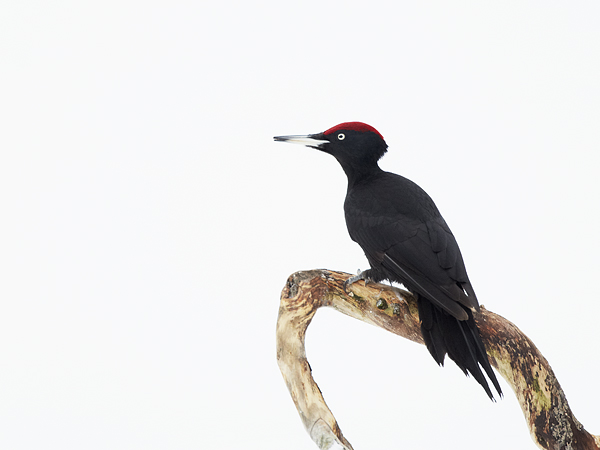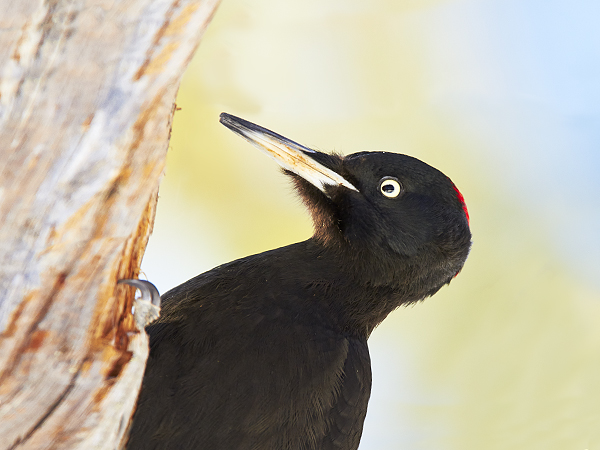| Black Woodpeckers |
|
The Black Woodpecker is the largest European Woodpecker and is 46 cm tall, It is a large woodpecker that is twice the size as a Great Spotted Woody and three times the size as the Lesser Spotted. It can be compared in size to other black birds from the Corvid family, larger than a Jackdaw and similar in size to a Rook. It has a large range across Europe, and can be found in many countries including Spain, France, across mainland Europe to Greece and parts of Asia. They are also found in the forests of Northern Europe and the Arctic Circle, but not in Britain or Ireland. Estimates of the European population varies between 750,000 to 1.5 million pairs and this is thought to be about a third of the global population. Therefore there could be between 5 and 15 million Black Woodpeckers in existence, and as such its not a threatened bird. It is found as far East as China, Korea, and Japan. The country with the largest population is thought to be Russia which is not surprising given the huge area covered by targia forest. The Black Woodpecker has the longest and the loudest drumming of the European woodpeckers with 16 to 20 bursts per second which can last up to three seconds long and this can often be heard up to 3km away.
I have seen and photographed Black Woodpeckers in Belguim, Sweden, and Finland. |
---8037.jpg) |
---J4F1210.jpg) |
---J4F1593P.jpg) |
 |
---59O6308.jpg) |
---59O3490.jpg) |
 |
 |
 |
|
Identification of Black Woodpeckers from other European species is not hard due to their size and obvious black colour. Identifying males, females and juveniles can be a bit more tricky. All Black Woodpeckers have a red crown, this is much larger in males and extends as far as the beak. (the image above is of a male bird). With females the crown is duller in colour and is only on the rear of the crown, the top of the crown is black (the two images below is of female birds). Young and juvenile birds also have a red patch on the back of the neck, but this is duller in colour and often has black flecks. Adult birds have a dark tip to their bill and their eyes are white. Juveniles have dark eyes, their beaks are light in colour throughout and they have a pale grey throat. |
 |
 |
| Black Woodpeckers are a species that I hope to see and photograph more as my quest to photograph all ten species of European woodpecker continues. |
